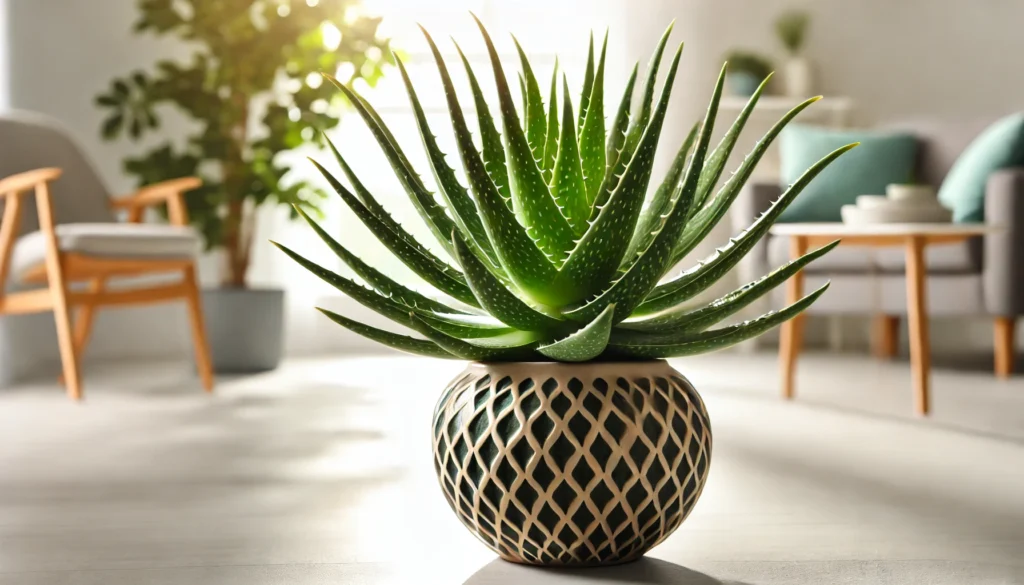
The Jade Plant, known scientifically as Crassula ovata, is a popular succulent admired for its thick, fleshy leaves and tree-like appearance. With its compact size and easy-care nature, the Jade Plant can add a touch of greenery to any indoor space. Typically, Jade Plants can grow up to 3-6 feet tall and wide, making them a perfect addition to your home or office.
A Rich History and Ideal Growing Conditions
Native to South Africa and Mozambique, the Jade Plant has been cherished as a houseplant for its beauty and resilience. It is also known as the “”money plant”” and is believed to bring good luck and prosperity in various cultures. Jade Plants thrive in warm, dry environments that mimic their natural habitat. They grow best in bright, indirect light but can tolerate some direct sunlight, making them ideal for sunny windowsills.
Jade Plants and Pets: Important Information
While Jade Plants are beautiful and easy to care for, it is important to note that they are toxic to pets. If ingested by cats or dogs, they can cause vomiting, lethargy, and incoordination. To keep your furry friends safe, ensure that your Jade Plant is placed out of their reach.
Best Practices for Caring for Your Jade Plant
Caring for a Jade Plant is relatively straightforward, making it a great choice for both novice and experienced plant enthusiasts.
Watering and Humidity
Jade Plants prefer to be kept on the dry side. Water them thoroughly when the top inch of soil feels dry, and ensure that excess water drains out of the pot to prevent root rot. In general, watering every 2-3 weeks is sufficient, but you may need to adjust based on your specific environment. These plants thrive in average household humidity levels and do not require additional humidity.
Soil, Light, and Temperature
A well-draining succulent or cactus potting mix is essential for Jade Plants. They grow best in bright, indirect light but can also tolerate some direct sunlight. Place your plant near a window where it can receive plenty of light. Jade Plants prefer temperatures between 65°F and 75°F. They are relatively hardy but should be protected from extreme cold.
Common Problems and Remedies
Even with the best care, Jade Plants can encounter some common issues. Yellowing leaves can be a sign of overwatering or poor drainage. To remedy this, ensure the soil is well-draining and adjust your watering schedule accordingly. Brown leaf tips can be caused by dry air or inconsistent watering. Maintaining a regular watering schedule can help prevent this issue.
Jade Plants are generally pest-resistant but can occasionally be affected by pests such as mealybugs and spider mites. To combat these pests, use a water and mild soap solution or neem oil spray. Regularly inspecting your plant and wiping down the leaves can help prevent pest infestations.
Propagation and Benefits
Propagating Jade Plants is relatively easy and can be done through leaf or stem cuttings. Cut a healthy leaf or stem and allow it to dry for a few days before placing it in soil. Water sparingly until new growth appears. This method is not only easy but also a great way to expand your collection or share plants with friends.
Jade Plants are not only beautiful but also beneficial to your indoor environment. They are known for their air-purifying qualities, helping to remove toxins from the air.
Final Thoughts
Jade Plants are one of the most charming and easy-to-care-for succulents you can find. Their thick, fleshy leaves and tree-like appearance make them a favorite among plant enthusiasts. While they do require some attention to thrive, the rewards are well worth the effort. With the right care, your Jade Plant can become a stunning focal point in your home. So why not add a Jade Plant to your collection and enjoy the beauty and benefits it brings?
Stay connected with the world of plants! Subscribe to Phylofy for expert gardening tips, DIY projects, and eco-friendly inspiration. Join our community and nurture your love for nature. Don’t miss exclusive content and updates. Subscribe now!



